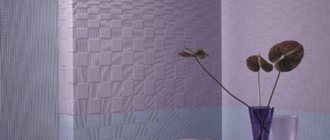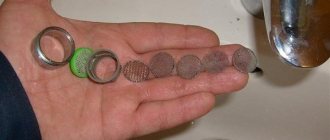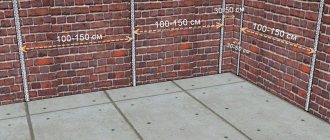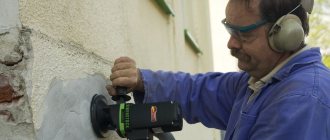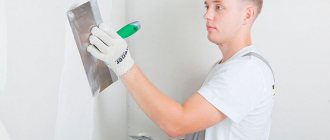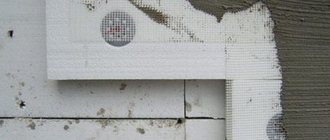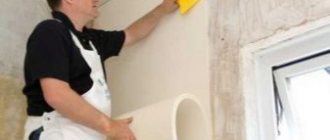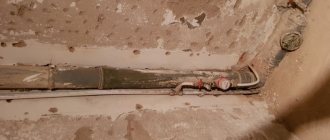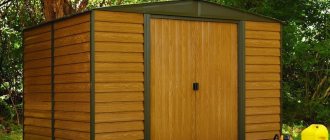In the modern world, difficulties arise more and more often in preparing the surface for wallpapering. And many people ask this question only before the withdrawal process. It turns out that this is not as simple as it seems. In this article, we have prepared 7 tips for you that will definitely be useful to you and you will cope with this task without difficulty.
Preparing to remove wallpaper
Before starting dismantling, it is important to prepare the workplace. The old coating does not always come off easily - you should have tools at hand. Safety precautions are no less important.
Taking Precautions
It will not be possible to remove the old coating in absolute cleanliness. Plaster, old paint, and dust may come off along with the wallpaper. To preserve furniture or floors, you need to prepare the room.
Preparing the room:
- Completely turn off the electricity in the room.
- Seal sockets and switches with masking or stationery tape.
- Take out the furniture.
- Lay film or newspapers on the floor.
- Seal the baseboards.
- If there is any furniture left, move it to the center and cover it.
- Leave a wet cloth at the entrance - it traps dust.
What tools are needed for dismantling?
Various equipment is used to remove old coating. The material matters - some wallpapers can be easily removed, others need to be wetted or treated with a special compound. But there is a list of basic tools.
You will need:
- Gloves.
- Putty knife.
- A bucket of warm water.
- Dishwashing liquid.
- Roller.
- Sponge.
- brush with metal bristles.
- Wallpaper removal.
- Iron.
Wetting
Best suited for paper wallpaper.
- In this case, water and a sponge are usually used. After wetting, the wallpaper and glue soften, and the coating can be easily removed: pry it off with a spatula and pull it towards you. It is advisable to wet and remove wallpaper in parts. By the way, the coating comes off most easily on the “seam” side.
- If it is difficult to clean, the area should be moistened again; You may have to use a scraper.
- For wetting, you can also use a roller, rags, or spray bottle. Water should not be applied in excess: it should not flood switches and sockets and drain onto the floor. You need to start from the top.
The good thing about this method is that it is hygienic and dust-free.
Basic methods and means for removing old wallpaper
Each material has its own characteristics. How to remove it depends on the type of old canvas.
Using water
The simplest and most obvious method. By wetting, you can easily remove old self-adhesive, non-woven, paper and even vinyl wallpaper.
Tools:
- A bucket of water at room temperature.
- Roller.
- Construction spatula.
- Stationery knife.
Algorithm of actions:
- Add dish soap to the water and stir.
- Wet the roller and roll it over several strips of wallpaper.
- Wait - the material should soften. Use a spatula to pry the fabric at the joint and remove.
- Use a knife to remove small pieces from the wall.
Video
The full process can be seen in the video.
Mechanical method (steam and needle roller)
Using this method, you can easily remove almost any old coating. Having a steam generator is a great bonus at work. An alternative is an iron, but you will need a sheet or piece of cotton fabric.
What wallpaper is best to use for?
Suitable for paper, non-woven, vinyl wallpaper.
Inventory:
- Steam generator or iron with sheets.
- Container with water.
- A wallpaper tiger (also known as a needle roller), but a utility knife will also work.
- Putty knife.
How to remove wallpaper with steam:
- Go over the canvas with a needle roller.
- Wet the sheet, wring it out and lean it against the wall.
- Set the iron to maximum temperature.
- Iron the sheet several times.
- Pry it off with a spatula and quickly remove it.
Video
A life hack for removing wallpaper using a steam generator, as well as comments, can be seen in the video.
Special chemicals
If the wallpaper is tight, it is difficult to remove it using traditional methods. To save time and achieve the best result, special chemical solutions are often used. They are sold in construction supermarkets and help quickly remove old sheets.
What wallpaper is best to use for?
Suitable for non-woven, paper, washable and textile wallpapers.
Required equipment:
- Roller.
- Rubberized gloves.
- Basin with water.
- Wallpaper tiger (if not, then you can use a knife).
- Putty knife.
Step-by-step instruction
- Dilute the substance with water according to the instructions.
- Roll the walls with wallpaper tiger or stab them with a knife.
- Apply the composition to the walls with a roller.
- Leave the wallpaper to soak (the exact time is on the packaging).
- Simply pry the canvas with a spatula and tear it off.
Video
Details can be seen in the video.
Removing old Soviet wallpaper requires effort. Often they are glued to a layer of newspapers, under which there is old plaster. To begin with, you can try the traditional method - soak it with water and peel it off. If that doesn't work, use liquid.
Required Tools
The set of tools depends on the chosen method and the conditions for gluing old canvases. Sample list:
- sharp spatulas;
- container with water;
- detergents;
- roller, set of sponges, rags;
- gloves to protect hands;
- large bags for garbage;
- ladder.
In difficult cases, in order to peel off old canvases, you will need a knife and a “Tapeten-Tiger” device. The design includes knife disks that allow you to peel off the top layer of wallpaper. A steam generator and an electric drill with a special metal brush attachment will help remove paper coatings.
Features of removal depending on the base and material
Different coatings have their own characteristics. This must be taken into account when choosing a removal method.
- Vinyl. They leave easily. It is enough to soak them in water and remove them after 20-30 minutes.
- Paper. They come off easily if they are glued with high-quality glue (universal “Methylane”). Remove with a knife or spatula. If they don’t come off, soak them in water or steam them with an iron.
- Non-woven. They have two layers, the top layer is removed. Ideally, it is better to steam old canvases or use a wallpaper remover.
- Liquid. They are afraid of moisture. To “unstick” them, just soak the wall; after a while, the coating will begin to peel away from the walls.
- Washable. Treated with a protective composition that does not allow moisture to pass through. You need to roll the walls with a needle roller, apply wallpaper remover, and remove after a while.
- Glass wallpaper. Easy to remove. You need to tear the sheets and fill the space under them with water. After 45 minutes they will start to lag behind. Or immediately fill it with a special liquid and easily tear it off.
- Self-adhesive. Old sheets come off easily; to speed up the process, you can moisten them with boiling water or use a hair dryer.
When not to touch
In very rare cases, the old layer is still left on the walls.
This happens when it is made with simple Soviet wallpaper and lies (attention!) perfectly flat. And at the same time, the new coating is also paper. In any other case, the old wallpaper must be dismantled.
How to peel off wallpaper depending on the type of surface?
To remove old coating from walls, it is worth considering the type of surface. This will simplify the work and eliminate additional manipulations afterwards.
Drywall
The material is not resistant to moisture. Using water or a chemical composition will not work, as it will lead to deformation of the drywall. You can remove the old coating with steam (iron) or peel it off manually, using a knife. Work carefully so that the knife does not scratch the drywall.
Concrete walls
Concrete is not afraid of water and high temperature. You can remove the old coating in any way, you need to start from the material of the canvas. Paper ones can be easily removed with water; washable, textile, vinyl and others can be removed mechanically or with a chemical compound.
Wooden surface (plywood, chipboard, fiberboard, gypsum board)
Wood and plywood are afraid of moisture, and if the surface was not additionally treated before wallpapering, it will not be possible to remove the canvas using the soaking method. You can remove the coating from painted walls with steam. A win-win option is a composition for removing old wallpaper. It does not deform the wooden surface and will help remove the coating with minimal time. Or carefully peel off the wallpaper with a knife or spatula.
Choose “your” way
You can remove wallpaper from walls in different ways: there are many ways. You have to decide which one is most suitable in your situation and get down to business.
So, here are the most popular methods for removing old wallpaper.
How to remove old ceiling wallpaper?
Removing old wallpaper from the ceiling depends on the material. It is inconvenient to use an iron on the ceiling; the only option is to soak it with water or a chemical solution.
You will need:
- Stepladder or table.
- Water container.
- Putty knife.
- Roller.
- Masking tape.
- Film.
For equipment, prepare glasses, gloves, a hat, and old clothes.
Step-by-step instruction:
- Take out the furniture.
- Turn off the electricity, remove the chandelier (preferably).
- Seal sockets and baseboards with tape.
- Cover the floor.
- Moisten the roller in water or a special water-based solution.
- Get the ceiling wet.
- Wait 25-40 minutes until the canvases are soaked.
- Carefully pry the sheet with a spatula and remove.
- Do not turn on the electricity, wait for the ceiling to dry.
Special liquid
It is good for all kinds of wallpaper. Apply after dilution in water. It is safe, economical and efficient. The wallpaper is well saturated with this product and then easily removed.
If you need to remove a waterproof coating or glass wallpaper, then before using a special liquid they are again pre-perforated.
What to do if the wallpaper is glued with PVA or bustilate glue?
If the old coating is glued with PVA glue, it will not be possible to remove it with a spatula or scraper. Ideally, you need a device - a grinder or grinder with sandpaper attachments. The process is dusty, but the result is worth it.
If you don’t have such devices in your arsenal, a needle roller will help out. It takes a long time to scratch old wallpaper. Finally, treat the walls with wallpaper remover and tear them off.
To remove old wallpaper glued to bustilat, you need to work for a long time with a scraper, a wire brush, or sandpaper.
- If there is putty under the wallpaper, this method is not recommended, so as not to have to refinish the walls.
- For paper sheets, the steaming method is suitable.
- It is better to treat washable, vinyl and textile wallpapers with a chemical compound and then safely remove them.
The nuances of cleaning drywall
If the wallpaper was pasted on a wall covered with plasterboard, it is necessary to take into account the peculiarities of the material that was used for leveling. The process of removing the old coating must take into account exactly how the coating was applied.
There are 2 options:
- for putty;
- directly onto the drywall.
If putty was used, then the wallpaper can be removed using almost any of the above methods, and even using solvents. There shouldn't be any problems.
If preliminary preparation of the walls has not been carried out, it may be almost impossible to remove old panels without damaging the drywall. In this case, sanding will be required. After this, the surface is primed and new wallpaper is glued.
Drywall consists of cardboard sheets and gypsum, so the paper base should not be allowed to become significantly wet .
How to rip off in problem areas?
The work will require more time and patience. This applies to stripping old wallpaper in a room with a suspended ceiling and behind radiators.
From under a stretch ceiling
You will need:
- Sharp knife.
- Wide spatula (preferable).
- Water or glue solvent.
Algorithm of actions:
- Place the spatula vertically on the ceiling.
- Using a knife, trim the canvas along the edge of the spatula.
- Apply the spatula again, moving it.
- In this order, trim the wallpaper at the border with the ceiling along the entire perimeter.
- Moisten the wallpaper with water or solution and remove.
Behind the battery
If the radiator can be dismantled, there will be no problems. For a stationary battery you will have to use a small spatula or knife. The result depends on the size of the radiator and how far your hand reaches.
Removing old wallpaper with your own hands without involving professionals should not be difficult. Manufacturers offer special chemical compositions that cope even with tightly glued old sheets. The main thing is to decide in advance on the removal method, prepare equipment and room.
Why is this necessary?
Perhaps someone will think: why not start gluing the old wallpaper right away? Indeed, why do you need to first clear the walls of them?
To be fair, it should be said that sometimes they are left behind. This will be discussed a little later. Cleaning is necessary for the following reasons:
- Without it, the new wallpaper will be an uneven canvas;
- After gluing, they may come off where the previous layer peeled off;
- The relief or image of the used coating can be viewed;
- Unaesthetic appearance after renovation.
As a result, labor and money will be wasted and new repairs will be required.
Multi-stage peel-off
Wallpaper such as self-adhesive wallpaper must be removed from the walls in several steps.
- First, soak and remove the top paper layer.
- Then the next layer, the film, is removed by heating it with a hairdryer and removing it with a spatula.
- Next, get rid of the adhesive layer: using a solvent-soaked napkin using circular movements.
- Finally, the remaining fragments are removed with sandpaper.
In all the described cases, the cleaned material should be immediately placed in garbage bags.
Of course, removing old wallpaper from walls is quite a labor-intensive task. But, keeping in mind the nuances of working with used materials and some “secrets”, it can be carried out without unnecessary expenditure of effort.
Additional recommendations
- Apartments built 60-70 years ago have crooked and thin walls. To peel off all the layers, get ready for light cosmetic repairs to smoothly turn into global construction work. Don't want to live among mountains of garbage for several weeks? Only work on the top coat.
- Old paper wallpaper, unlike modern washable ones, is difficult to remove. Don’t be afraid to use solvent or sandpaper, don’t forget to dry and prime the walls before gluing new coatings so that they fit well and last a long time. If you apply finishing material to an undried wall, mold will appear.
- A drill is an indispensable tool; it can not only make a hole or indentation, mix paint, tighten a screw, but even remove wallpaper that is resistant to solvents and water. A special brush with iron bristles is put on the drill. They grind the concrete base with it, simultaneously filling up the unevenness with acrylic putty (it is inexpensive and of good quality). For an even application, use a steel tool.
Attention
If PVA glue was used during the previous repair, neither the sharpest spatula, nor a drill with attachments, nor chemicals will help. The slabs will have to be replaced with new ones or the repairs will have to be abandoned altogether.
Before starting work, familiarize yourself with the nuances of the work and ask advice from repairmen. Following the rules will help you complete the task quickly and comfortably, despite the apparent painstaking nature of the work. Spare no effort: your efforts will pay off with interest!
Which method to choose: mechanical or chemical
If we combine all the methods, they can be divided into two large groups:
- Mechanical.
- Chemical.
The first is a series of manipulations that are performed manually using tools. It takes brute force and time.
The chemical method allows you to remove the canvas without effort. You only need a special wallpaper remover. But which method is better to choose?
There is no perfect option. It all depends on the specific situation. If the canvas does not hold tightly, then the mechanical method is better. Otherwise, you will need a wallpaper remover.
However, this method also has disadvantages: high cost and toxicity of the product. Next we will look at specific cases.
The "Mole" method
Pipe cleaner is also used in practice. It is suitable for stubborn coatings. Gloves should be used and the product should be used with caution.
The solution is made in a 1:2 ratio (product to water), stir well. It is applied to the material carefully, with a roller. After five to ten minutes of getting wet, the wallpaper will come off entirely when removed.
